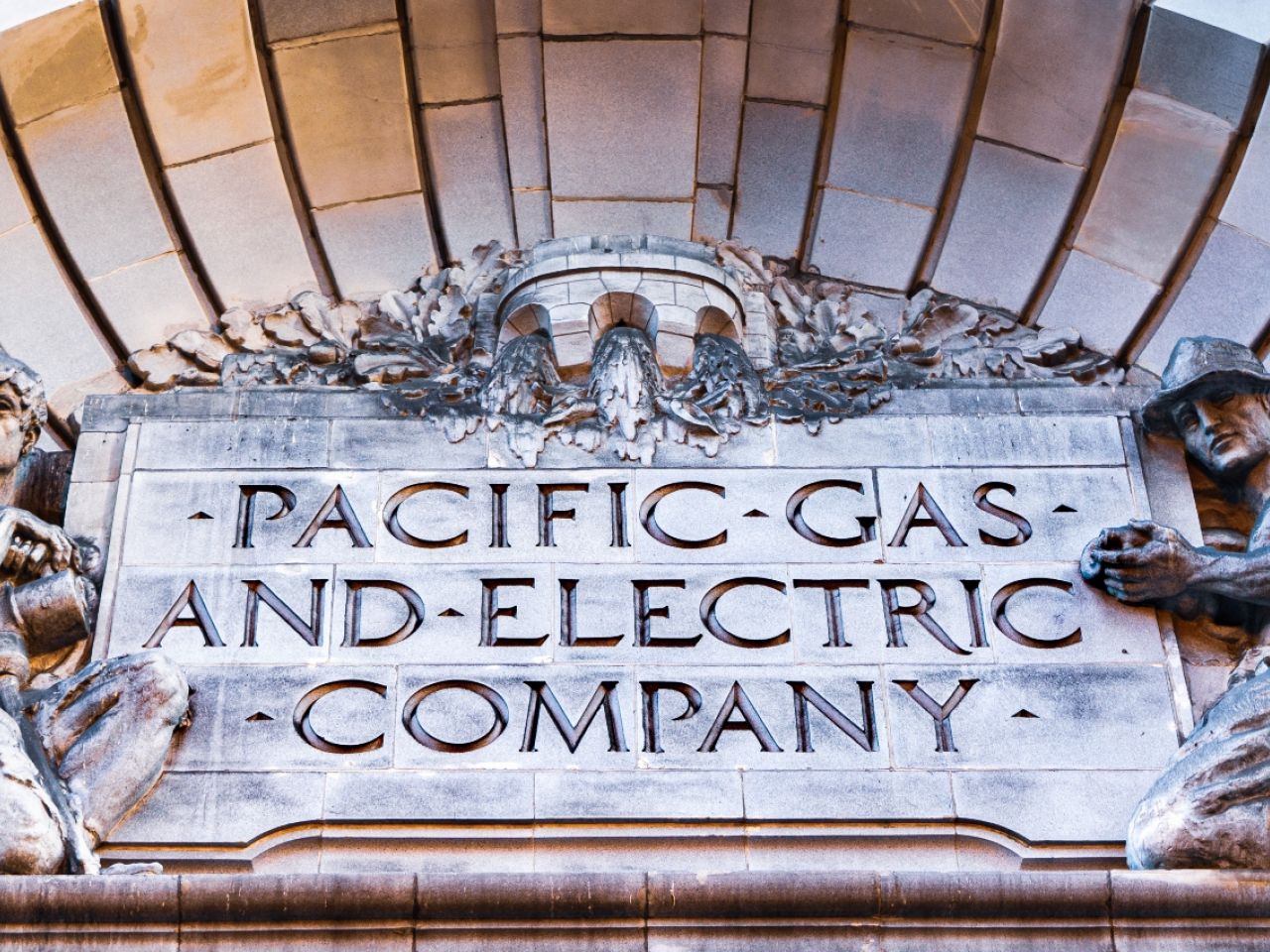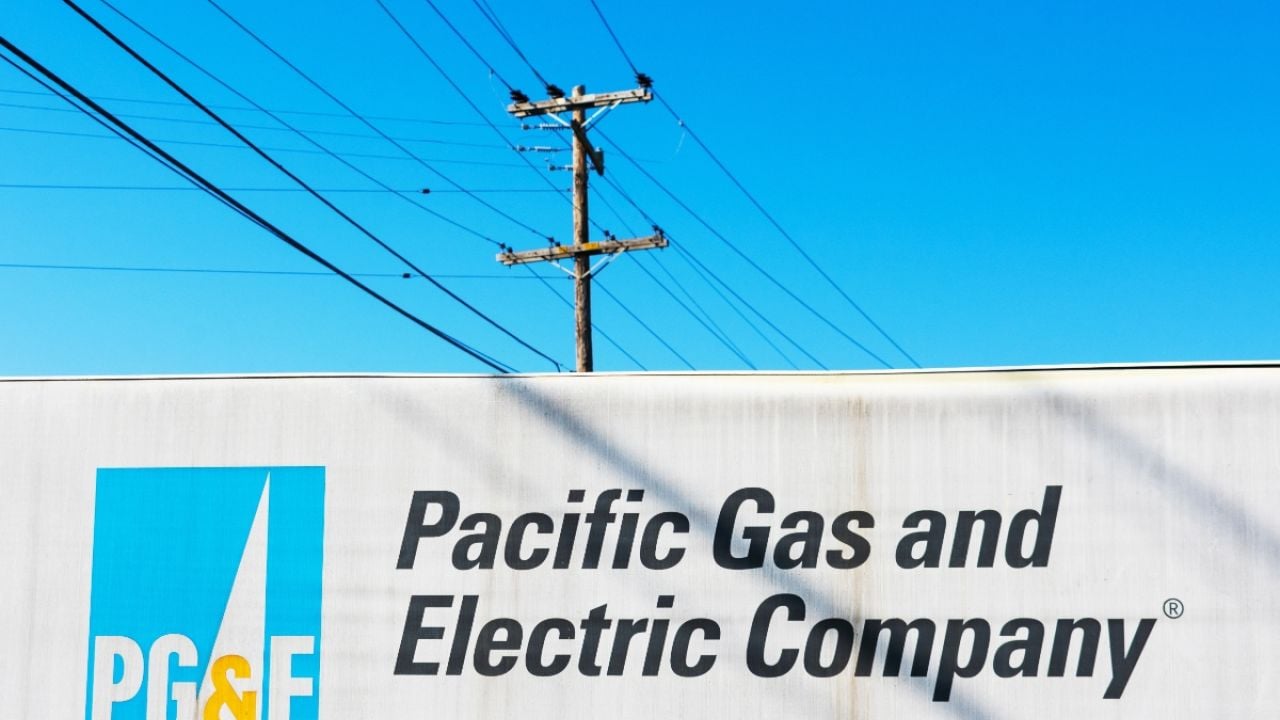
EWG presents this exclusive four-part series on Pacific Gas & Electric, or PG&E, the largest utility company in California, with a history of mismanagement and putting profits over consumers. The series shows how PG&E is the poster child for the financial, environmental and policy flaws in energy monopolies, and is a call for for a cheaper, more equitable energy future.
California energy ratepayers are currently trapped in PG&E’s misguided operating plan that prioritizes investments that are designed to hike profits and reward shareholders. And the utility’s monopoly control over power means its customers have little means of escape.
The company, California’s largest investor-owned utility, uses its outsize political influence to ensure ratepayers pick up the tab for wildfire damages it has caused and the resulting liability. As part of its seemingly never-ending quest for money, PG&E further loads its coffers to protect profits, stock price and control of its electric system.
Electric monopolies should no longer be able to use their excessive influence to protect profits by increasing flat charges, which reduces incentives for customers to invest in rooftop solar and energy efficiency. Soaring charges undermine potential savings from those vital clean energy investments, ultimately increasing power costs while doing nothing to fight the climate crisis.
If PG&E is successful with the plan it has put before the CPUC, the solar industry will likely flee the state, and thousands of jobs lost…
The solution is to prioritize a decentralized power grid advocated by EWG that would consider ratepayer investments in solar and energy efficiency as benefits to the energy system, reward those ratepayers with cost savings, ban utilities from using customers’ money to pay for bad investment decisions or liability for wildfires and other catastrophes they cause, and rely on effective solutions to the climate emergency.
But unless California overhauls its power grid, PG&E will continue to have its way.
And that way is one which ensures the utility can exert its monopoly power to raise charges, prop up failing energy sources like natural gas and shift financial risks to customers.
Reframing ratemaking for the worse
A 2013 report from the Edison Electric Institute, or EEI, which represents investor-owned utilities, raised the alarm that utility profits were under threat from energy efficiency investments and customer-owned solar. Since then, PG&E and others have focused single-mindedly on reframing ratemaking principles to increase fixed customer charges.1
Until the mid-2000s, the utility industry profited from consistently increasing electric demand. This helped utilities justify overbuilding new power plants and infrastructure additions, and secured the companies’ steady revenue in the face of no competition.
But electric demand has remained essentially flat2 for the past 15 years, thanks to increasing efficiencies in lighting, heating, air conditioning, industrial motors and other technologies.
For the first time, the industry also began to face serious competition from customer-owned power generation, typically rooftop solar.3 Now the competition is heightened by customer-owned battery storage that ensures a reliable decentralized source of power.4
This distributed approach to power threatens the financial stability enjoyed by utilities for decades. The era of gross inefficiencies in the economy in which the utility industry anchored its profits has come an end. But that’s not enough to break PG&E’s business model.
PG&E maintains its stranglehold on energy supplies by constantly pursuing excessively high fixed charges for ratepayers who want to invest in cleaner power. It claims that solar customers, who typically have higher incomes, don’t pay their fair share of the electric system, while shifting the costs they avoid by reducing their electric bills to non-solar customers, particularly those with low incomes. The disingenuous claims echo false statements from EEI’s long-outdated, self-serving report.
2019 protest in front of PG&E headquarters in San Francisco
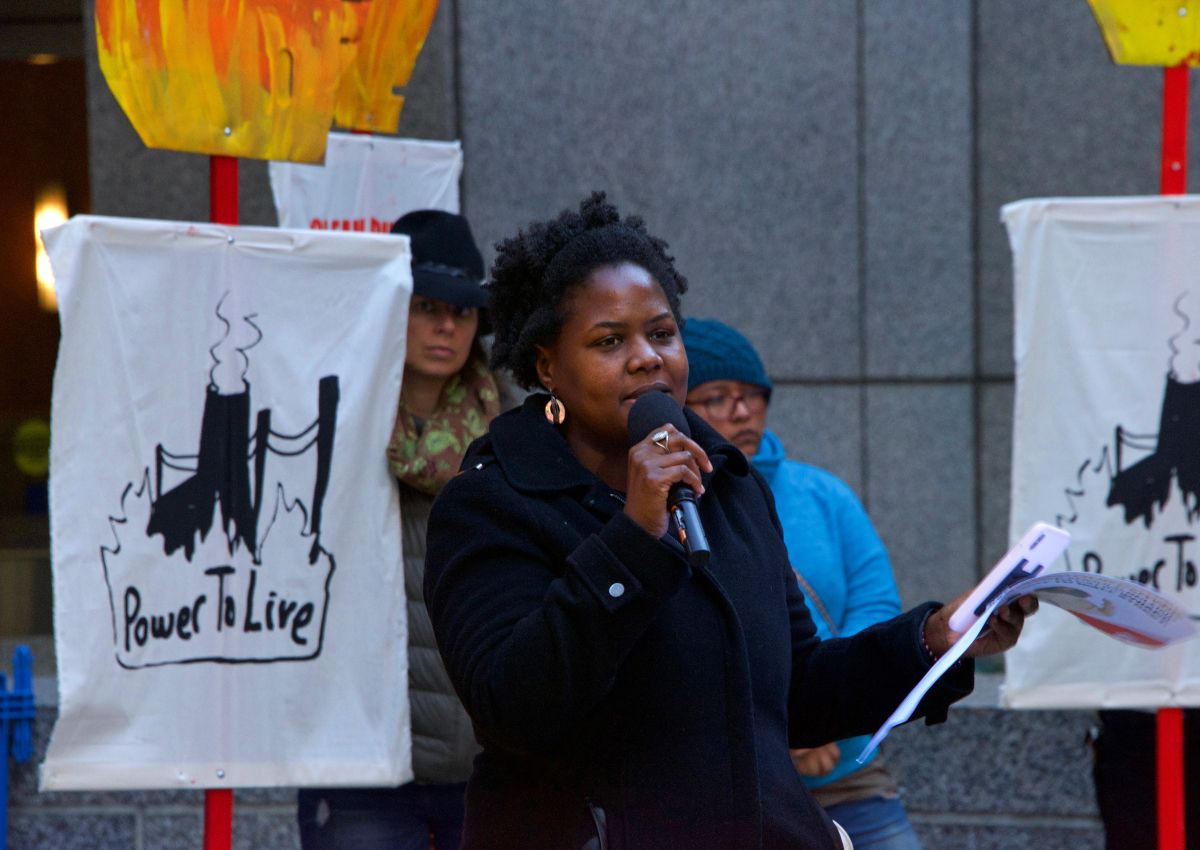
Photo: Sheila Fitzgerald via Shutterstock
False rationales behind PG&E’s schemes
PG&E is urging the California Public Utilities Commission, or CPUC, to adopt a solar power net metering plan that will add on average $48 to monthly bills for the company’s ratepayers.5 If adopted, the plan would make California the most expensive and punitive in the country for solar.
Hundreds of environmental, consumer and environmental justice organizations and solar industry pushed back. As a result, the CPUC tabled the proposed decision, because Gov. Gavin Newsom suggested changes were needed.6
In response to the Governor’s statements, the Commission issued a request for comments7 on various aspects of its Proposed Decision. One of the “changes” sought is to impose a high fixed charge – up to $600, according to the Solar Rights Alliance8 – for “non-bypassable charges.” These are charges on ratepayer bills for public benefits programs like energy efficiency but also, in California, for fire damages that are normally assessed according to how much energy a customer uses. The new proposal would convert these charges to a fixed charge that, in EWG’s estimation, would have the same negative impact on the customer-owned solar market as the formerly proposed grid access charge mentioned above. EWG filed comments in opposition of fixed non-bypassable charges.9
The utilities maintain that rooftop solar net energy metering, or NEM, customers need to pay their fair share, based on the size of their solar systems. Such a high charge would have a devastating effect on the rooftop solar market in the state.
But does this cost-shift actually exist? Utility expert Bill Powers and the group Protect Our Communities say not likely. In testimony on the NEM proposal, they have shown that the state is significantly downplaying the avoided energy development costs solar provides, and that utilities are exaggerating the cost-shifting by roughly $3.4 billion.10
Powers calculates that the full benefit of the average distributed solar system in PG&E territory saved nearly $640 more than the purported cost-shift in a previous study that was “extensively cited” by the California Public Advocates Office in the proceeding.11
Protect Our Communities also notes the state does not consider the resiliency, or avoided carbon emissions benefits, of solar plus storage, which can be readily incorporated into the state’s avoided-cost assessment of solar plus storage as dollar values.12 It concludes, “The total benefits of customer-sited renewable generation under the current NEM tariffs, including societal benefits, outweigh the total costs.”13
Powers says that half the $40 billion regulators have forecast to harden the transmission and distributions system in “High Fire Threat Districts” by 2030 could be avoided with “saturation deployment of customer-sited solar plus storage” in these areas.14
If PG&E is successful with the plan it has put before the CPUC, the solar industry will likely flee the state, and thousands of jobs lost, as was the case in Nevada, which imposed similar draconian measures, until the state reinstated net metering with some adjustments.15
Shifting financial and liability risks to customers
The cost burdens facing ratepayers in California become equally important when it comes to the state government’s shielding PG&E from its own egregious mistakes.
Within a decade, PG&E was convicted of two felonies: once for a natural gas pipeline explosion that occurred in 2010 due to its wanton violation of federal safety standards, and again for starting the Camp Fire, in 2018, which killed 84 people.16 The utility ultimately faced 750 lawsuits17, and filed for bankruptcy in January 2019.18
Since the Camp Fire, criminal charges have been filed in Shasta19 and Sonoma counties.20 The claim is that the utility’s mismanagement of power lines started the Zogg and Kincade fires, respectively. Shasta county officials recently charged the company with 11 felonies and 12 misdemeanors for the Zogg fire, which killed 5 people.21 PG&E is disputing the charges.22
In April 2021, the Sonoma County district attorney filed criminal charges of five felonies and 28 misdemeanors resulting from the Kincade Fire.23 Last year’s Dixie Fire, that burned nearly one million acres, will likely cost PG&E more than a billion dollars “before available recoveries,” it says in a filing with the Securities and Exchange Commission.24 25 In January, California’s fire management agency found that PG&E was responsible for the Dixie Fire.26 A recent settlement between PG&E and 5 impacted counties in the northern California says that more than 24 lawsuits were filed by 1,000 plaintiffs.27
The settlement amounts to $55 million, plus $15 million per year for 5 years to pay for a federal fire safety monitor, while criminal charges were dropped.28 Sonoma County officials also entered into a settlement agreement with PG&E, dropping criminal charges as well.29 The $55 million includes compensation for the Dixie Fire and Kincade Fires to the county governments and to nonprofits, fire departments, and other entities. Compensation will also be provided for homes and other property damaged in the fires. The $55 million in civil penalties is somewhat more than PG&E’s compensation package for its CEO, Patricia Poppe, last year.30
After the pipeline explosion and Camp Fire convictions, the company poured money into political campaigns and lobbying efforts, and spread its largesse among dozens of political action committees across the political spectrum, according to the ABC affiliate in Sacramento, in a series of articles and videos chronicling efforts by Gov. Gavin Newsom’s administration to protect PG&E from financial ruin.31 From 2017 to 2018,32 and in 2020,33 PG&E contributed more than $6 million in campaign contributions. In 2018 alone, according to data compiled by Follow the Money, the company spent nearly $10 million on lobbying.34
Horses being evacuated from Paradise, Calif., during the 2018 Camp Fire
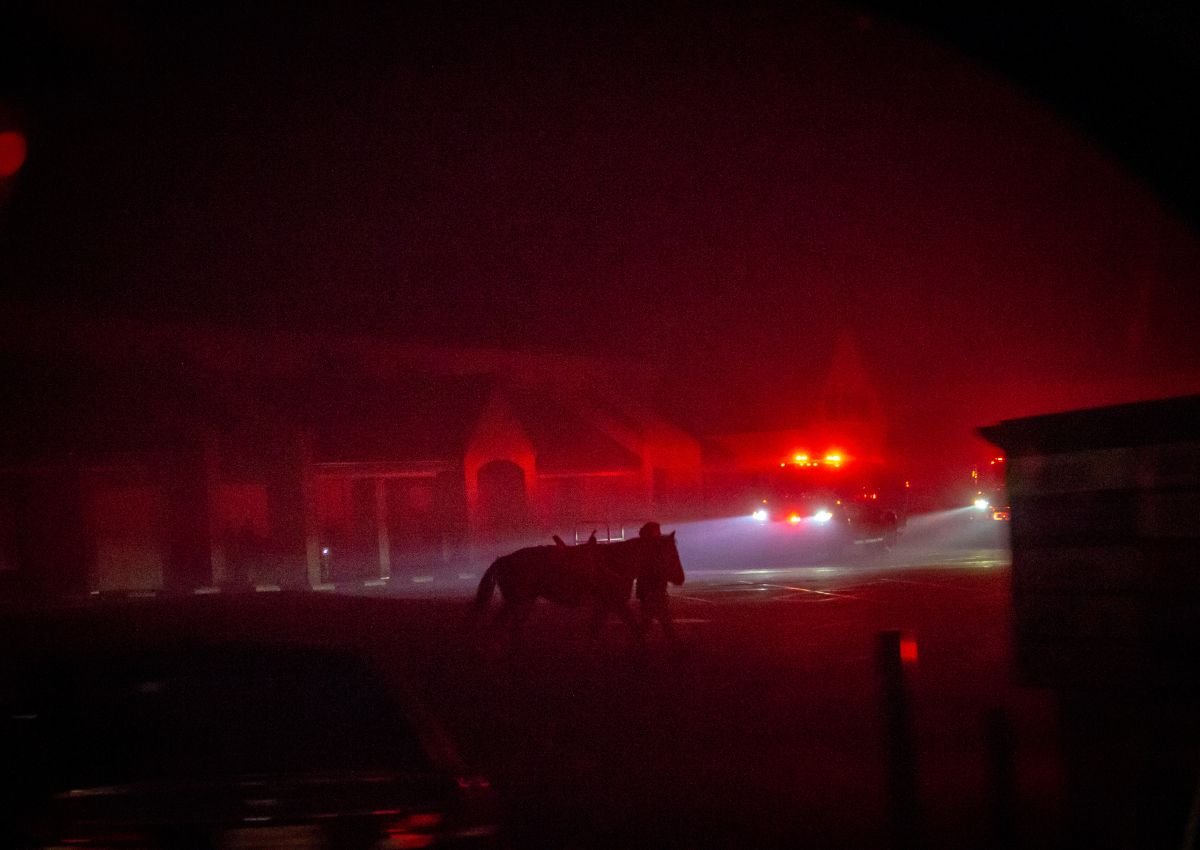
Photo: Dylan Mittag via Shutterstock
It worked. PG&E’s lobbying secured the passage of Senate Bill 901 in 2018, which allowed utilities for the first time to issue low-interest bonds for fire damages, to be paid off by ratepayers.35
In 2019, the state assembly then passed House Bill 1054,36 which created a fund utilities can tap to pay for ongoing fire damages. Utilities put up half of the $20 billion earmarked for the fund,37 with ratepayers funding the rest via a mandatory electric bill fee.
The two laws also mandate that electric utilities obtain wildfire safety certificates based on plans that must be approved by an objective third party. If the utility secures a safety certificate, it can access the fund, and its “conduct would be deemed reasonable” in the event of a fire.38 That places the burden of proof on victims to show the utility was negligent.39
2019 photo of PG&E claiming to be conducting wildfire safety work in Sausalito, Calif.
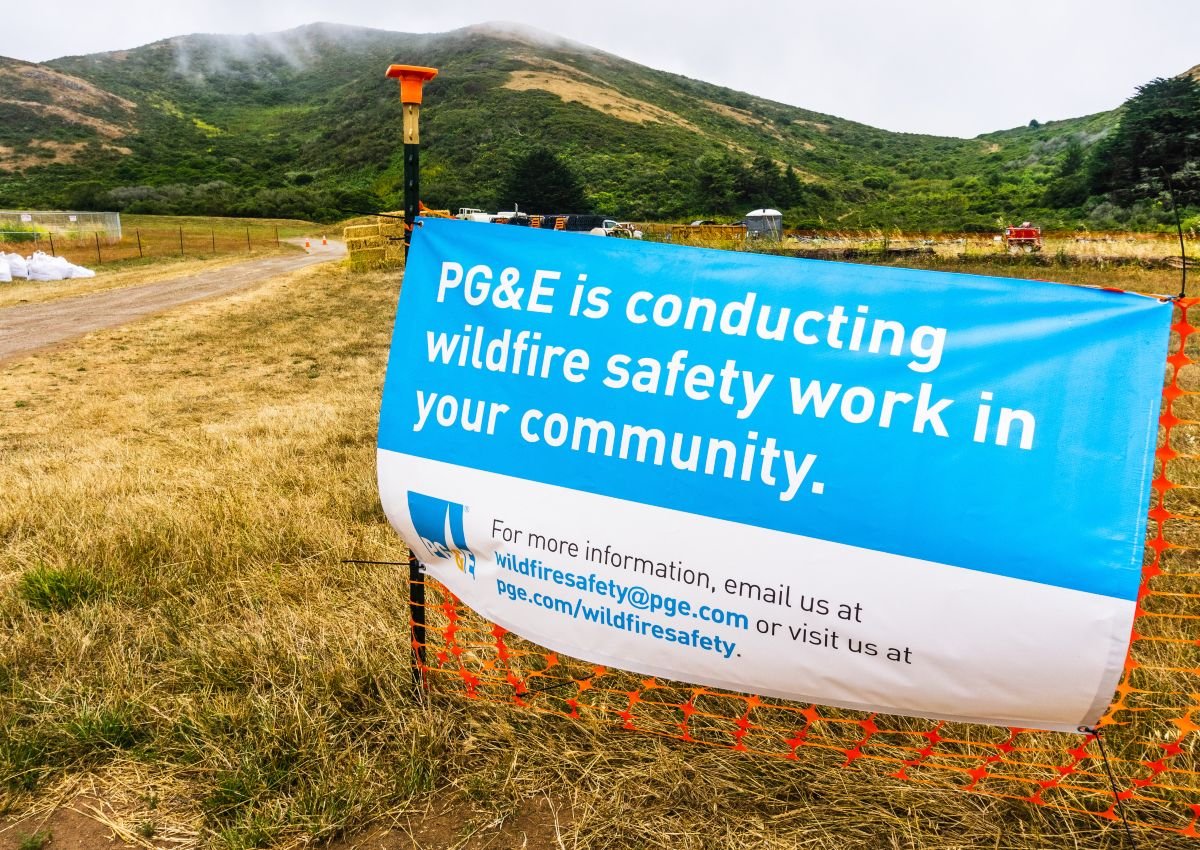
Photo: Sundry Photography via Shutterstock
But PG&E knew its power lines posed a significant risk and worked to block adoption of meaningful fire mitigation measures for the better part of a decade.
In the 2020 annual report it filed with the SEC, PG&E confirms the fire-damage threat posed by its transmission system: “Although the Utility has taken extensive measures to reduce the threat of future wildfires, the potential that the Utility’s equipment will be involved in the ignition of future wildfires, including catastrophic wildfires, is significant.”40
The Camp Fire resulted in PG&E’s conviction of 84 counts of manslaughter – “the largest corporate homicide conviction in history…”
State regulators have questioned how “extensive” those measures are, for example, determining in 2021 that PG&E was not prioritizing high fire-risk transmission lines.41
This is a long-running problem. PG&E spent the better part of a decade leading the charge against wildfire protection regulations before the CPUC and the legislature, according to a 2020 Frontline analysis.42
Mark Ferron, a former regulator, told Frontline, “On a scale from one to 10, where 10 is completely obstructive and 1 is cooperative, I’d put PG&E at nine.”43
Former regulator Catherine Sandoval said, contrary to PG&E’s early public stance that wildfires were not a big issue for them, the company “knew that their territory was vulnerable to wildfires. Any assertion that they were just getting started on it in 2019 is disingenuous.”44
State officials are wrong to support PG&E’s plans
Lawmakers and regulators alike are among the many officials in California who have shown they’re too willing to bend to PG&E’s demands instead of protecting ratepayers and the environment.
Newsom talked a good game in 2019 when he threatened to bring the utility kicking and screaming into the 21st century. But little of note has actually changed about how PG&E operates.
Last year, the California Public Utilities Commission, or CPUC, issued PG&E its wildfire certificate, despite vehement opposition and many deficiencies in the plan.45 Regulators even used a procedural maneuver to block parties to the proceeding from filing suit against the decision.46
The Camp Fire resulted in PG&E’s conviction of 84 counts of manslaughter – “the largest corporate homicide conviction in history,”47 according to the ABC affiliate. But prosecutors in Butte County, where the fire started, said the CPUC obstructed them, refusing to give up information and insisting staff would have to besubpoenaed to discuss anything with prosecutors.48
Wreckage of the 2018 Camp Fire in Paradise, Calif.
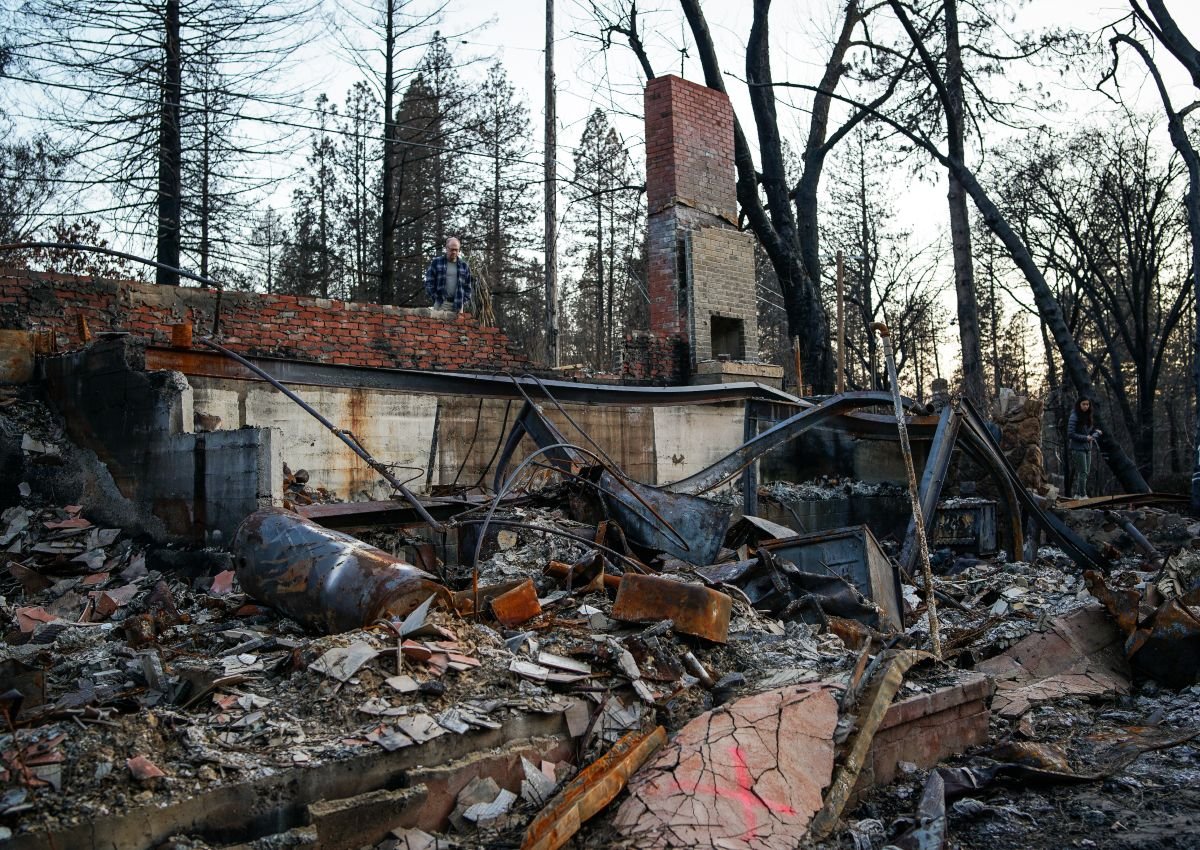
Photo: M Yerman via Shutterstock
As for the 83,000 victims of the fire, the judge managing the trust fund set up to pay out damages said in August that victims were unlikely ever to be paid in full.49 The payout is based on PG&E’s stock price, which plummeted from $70 a share in 201650 to about $1151 in early 2022 because of fires and bankruptcy.52
As of September, according to the manager of the trust fund, there was a $2.5 billion shortfall in funding for fire victims due to PG&E’s lagging stock price.53
Encouraged by continuing bailouts, PG&E recently filed a rate case to recover $3.6 billion from ratepayers, mainly for fire mitigation.54 It’s asking for $1 billion from ratepayers to help it meet its fire insurance obligations.55 In a separate filing, PG&E is requesting an additional $200 million in profit.56 All this while California’s Public Advocates Office has recommended high fixed charges in the net metering proceeding, mirroring utility arguments.57
State actions to bail out PG&E are all the more reprehensible when viewed in the context of U.S. District Judge for Northern California William Alsup’s comments during litigation over the company’s liability for wildfires: “Rehabilitation of a criminal offender remains the paramount goal of probation. During these five years of criminal probation, we have tried hard to rehabilitate PG&E. As the supervising district judge, however, I must acknowledge failure.”
He added, “While on probation, PG&E has set at least 31 wildfires, burned nearly one and one-half million acres, burned 23,956 structures, and killed 113 Californians. . . . Almost all of the survivors of these fires are still waiting for compensation. Many hundreds who lost their homes endure in travel trailers because they have not yet been compensated. Meanwhile, PG&E management pays itself handsome salaries and bonuses, all paid from revenues collected from customers. This unfairness should tug at our conscience.”
Despite the judge’s comments, the state recently renewed PG&E’s wildfire certificate.58 Fire victims and grassroots groups are outraged by the decision. Marie Taruc, coordinator of Reclaim our Power, told Energy & Environment News, “We are trying to create a path where we don't have to rely on a murderous private monopoly utility, which is PG&E, because that's not the future we want. We see what PG&E is capable of. We see their failures. We've seen the countless manslaughter charges against this murderous corporation.”59
For PG&E customers, it’s an unsustainable situation. Change is possible, but it will require California officials to finally focus on ratepayers and enact the laws and policies needed to transform the state’s power system into a decentralized 21st century clean energy solution.
6 https://www.kpbs.org/news/local/2022/01/20/big-decision-rooftop-solar-california-off-table-for-now
7https://docs.cpuc.ca.gov/PublishedDocs/Efile/G000/M473/K859/473859345.PDF
8 https://docs.google.com/spreadsheets/d/180LH9c5QJELs65UHCy2ofNEGmSEyKLHbgEHRK3ktzZ0/edit#gid=98099466
9 https://docs.cpuc.ca.gov/PublishedDocs/Efile/G000/M483/K587/483587274.PDF
15 https://www.greentechmedia.com/articles/read/nevada-bill-to-restore-netmetering-for-rooftop-solar-passes-in-the-senate
17 https://www.sfchronicle.com/california-wildfires/article/Legislature-to-vote-Friday-night-on-bill-13198305.php
19 https://www.sfchronicle.com/california-wildfires/article/Legislature-to-vote-Friday-night-on-bill-13198305.php
20 https://www.sfchronicle.com/california-wildfires/article/Legislature-to-vote-Friday-night-on-bill-13198305.php
22 https://www.tdworld.com/wildfire/article/21176847/pge-disputes-shasta-county-criminal-charges-related-to-2020-zogg-fire?utm_source=TW%20TDW%20Energizing&utm_medium=email&utm_campaign=CPS210929031&o_eid=8765B0191245B5C&rdx.ident%5Bpull%5D=omeda%7C8765B0191245B5C&oly_enc_id=8765B0191245B5C
23 https://www.sec.gov/ix?doc=/Archives/edgar/data/1004980/000100498021000039/pcg-20210930.htm#i8a41275c560a40249e946213399bfad0_112
24 https://www.sec.gov/ix?doc=/Archives/edgar/data/1004980/000100498021000039/pcg-20210930.htm#i8a41275c560a40249e946213399bfad0_112
25 https://www.sacbee.com/news/california/fires/article255474756.html#storylink=cpy
https://investor.pgecorp.com/financials/sec-filings/default.aspx
26 https://www.fire.ca.gov/media/edwez51p/dixie_fire_release.pdf
27http://www.buttecounty.net/Portals/30/Press%20Releases/20220411a.pdf?ver=2022-04-11-170846-663
28http://www.buttecounty.net/Portals/30/Press%20Releases/20220411a.pdf?ver=2022-04-11-170846-663
29https://www.2news.com/news/pg-e-to-pay-55-million-for-dixie-kincade-fires/article_8f15f842-b9be-11ec-9d40-2332070cbd1f.html
30https://www.ewg.org/news-insights/news-release/2022/04/pge-ceo-earned-more-50-million-2021
31 https://www.abc10.com/article/news/local/abc10-originals/fire-power-money-california-wildfires-investigation-pge/103-c273fb35-1c43-4d9a-9bdc-3d7971e5540b
32 https://www.abc10.com/article/news/politics/most-state-lawmakers-took-pge-money-did-yours-keep-it/103-a7e22e47-b054-4093-bb9e-66562f9e8bcf
33 https://www.abc10.com/article/news/politics/california-politicians-campaigns-2-million-pge/103-4161feb9-1591-4ffc-9fda-d9c49d7173b8
34 https://www.followthemoney.org/show-me?dt=3&lby-f-fc=2&lby-f-eid=2035#[{1|gro=lby-y,lby-f-eid,lby-d-ccg,lby-s
36 https://www.abc10.com/article/news/local/abc10-originals/newsom-pge-protection/103-65ca1d41-8efe-45b4-87bc-0cdecc714378
37 https://www.abc10.com/article/news/gov-newsom-signs-bill-for-21-billion-wildfire-relief-fund-so-whos-paying-for-it/103-a04d926c-3ef2-4008-9e79-3f2798beacc4
40https://www.pgecorp.com/investors/financial_reports/annual_report_proxy_statement/ar_pdf/2020/2020_Annual_Report.pdf
45https://www.publicadvocates.cpuc.ca.gov/uploadedFiles/Content/Press_Room/PGE%20Wildfire%20Safety%20Fact%20Sheet_FINALFINAL.pdf
46 https://www.newsdata.com/california_energy_markets/regulation_status/cpuc-withdraws-vote-on-pg-e-safety-certificate-but-increases-oversight/article_ce95a64a-9ee2-11eb-a8ae-d3393128888b.html
47 https://www.abc10.com/article/news/local/paradise/pge-investigation-hampered-by-state/103-0b88537f-14df-4470-9f42-610bf6b3ba09
48 https://www.abc10.com/article/news/local/paradise/pge-investigation-hampered-by-state/103-0b88537f-14df-4470-9f42-610bf6b3ba09
49 https://www.abc10.com/article/news/local/abc10-originals/pge-gavin-newsom-lobbiest/103-2fc7d4f4-a0e0-492d-ac1d-ec674e58a67b
50 https://www.ewg.org/news-insights/news-release/2021/09/pge-asks-california-201-million-profit-hike-benefiting-directors
53 https://www.scribd.com/embeds/524254370/content?start_page=1&view_mode=scroll&access_key=key-Q7qOUfYYzKNrKnIMBhoD
54 https://www.ewg.org/news-insights/news-release/pge-wants-customers-pay-36-billion-more-year-wildfire-safety
